The Difference Between Office GMT And Traveller’s GMT Watches
An identical display, but different ways to use them into the wild.
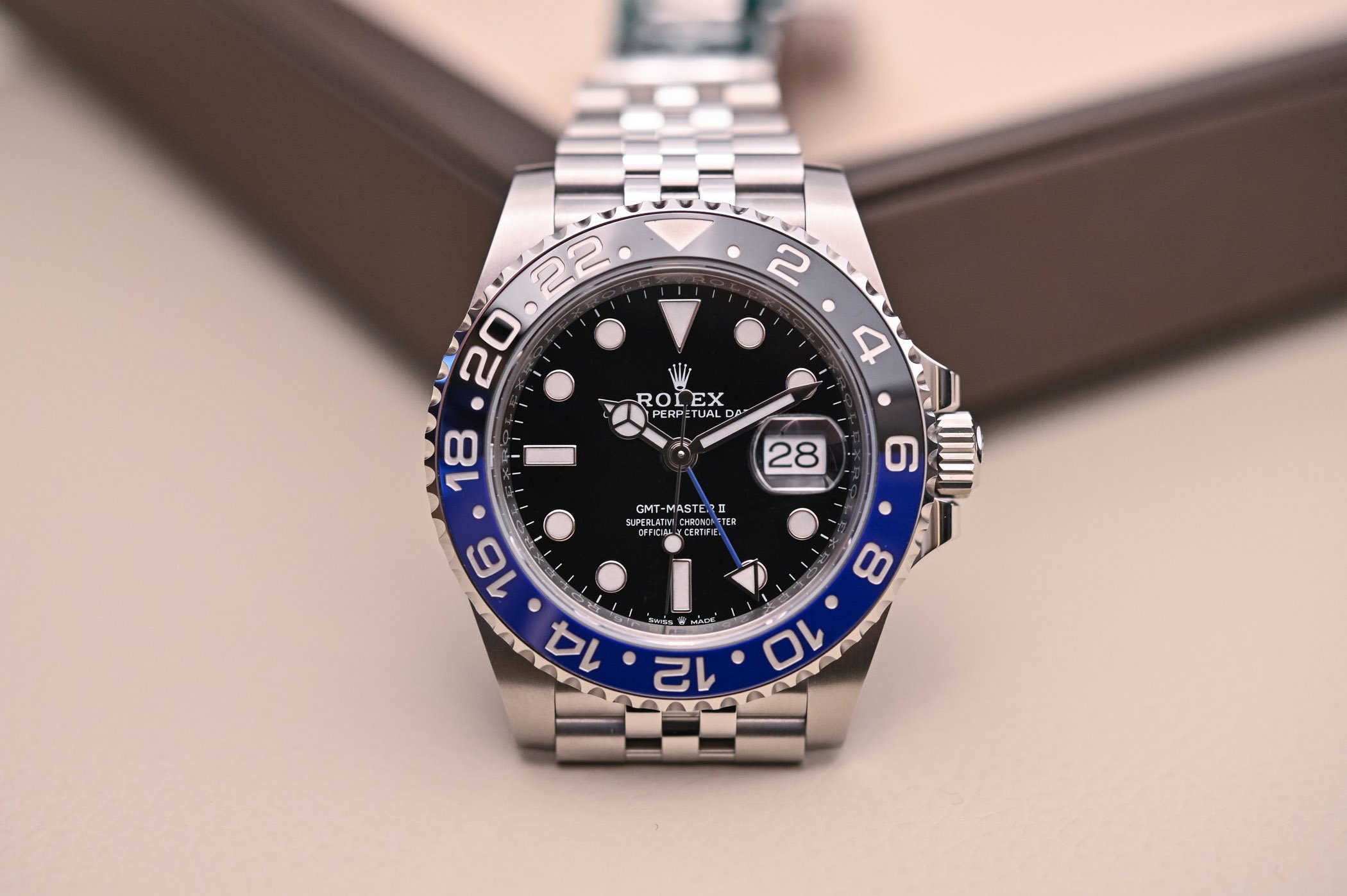
The world of watches is full of complications. I know, the name can be somewhat deceptive since the idea behind a complication is to bring the user something practical… well, most of the time, at least. Dozens of functions can be added to a watch, but few are as practical in real life as the GMT or dual time complication. A true blue-collar complication, on the same level as the chronograph or the diving bezel (something that can’t be said about an equation of time), there isn’t, however, just one type of GMT watch. To simplify, we can break up the GMT category into two variants: the true or traveller’s GMT and the office or caller GMT. Today, we take a closer look at the complication, so you know exactly what to expect when looking for your next GMT watch.
What is a GMT watch?
The creation of the first GMT watches resulted from a shift in society. Following WWII and the advent of commercial and intercontinental flights, mankind started to travel more frequently. This meant that people changed time zones more regularly, and pilots and travellers had to keep track of time at home and in their current location.

The creation of the first GMT watch is often credited to a small brand named Glycine. Its 1953 Airman watch was capable of tracking two 24-hour time zones at once, thanks to a 24-hour rotating bezel and a dial calibrated to display the time on a 24-hour basis. However, it was Rolex that popularised the concept of the GMT watch with its GMT-Master. Released in 1954 and conceived for Pan Am pilots, this watch defined the genre and is still a blueprint for the category. It combined a traditional 12-hour display of local time, a 24-hour scale indicated by an arrow-tipped hand (not independent back then) and a two-tone rotating bezel with a 24-hour scale, enabling the wearer to display the time in other zones. And with it, the GMT watch became an essential tool for travellers.
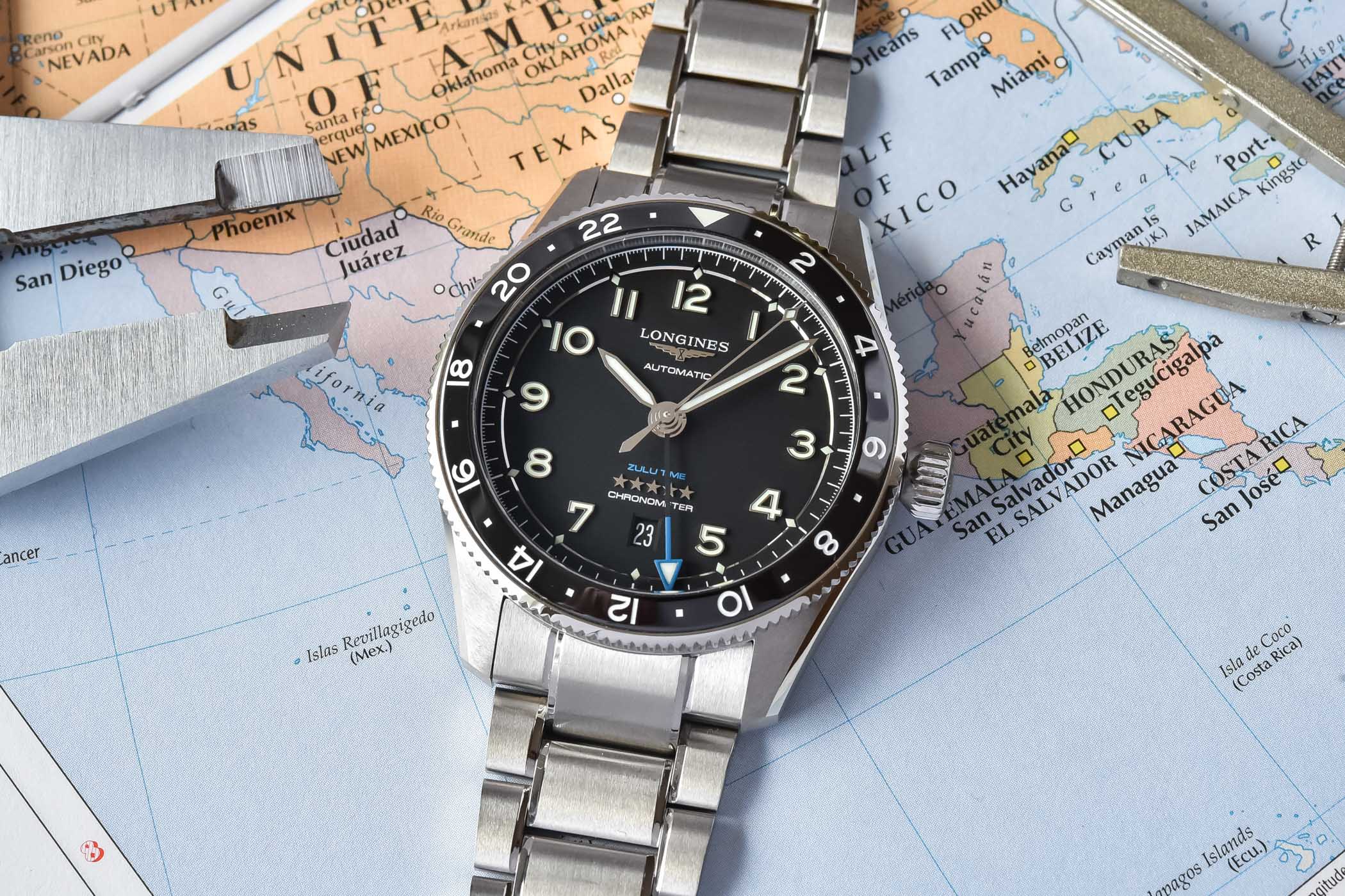
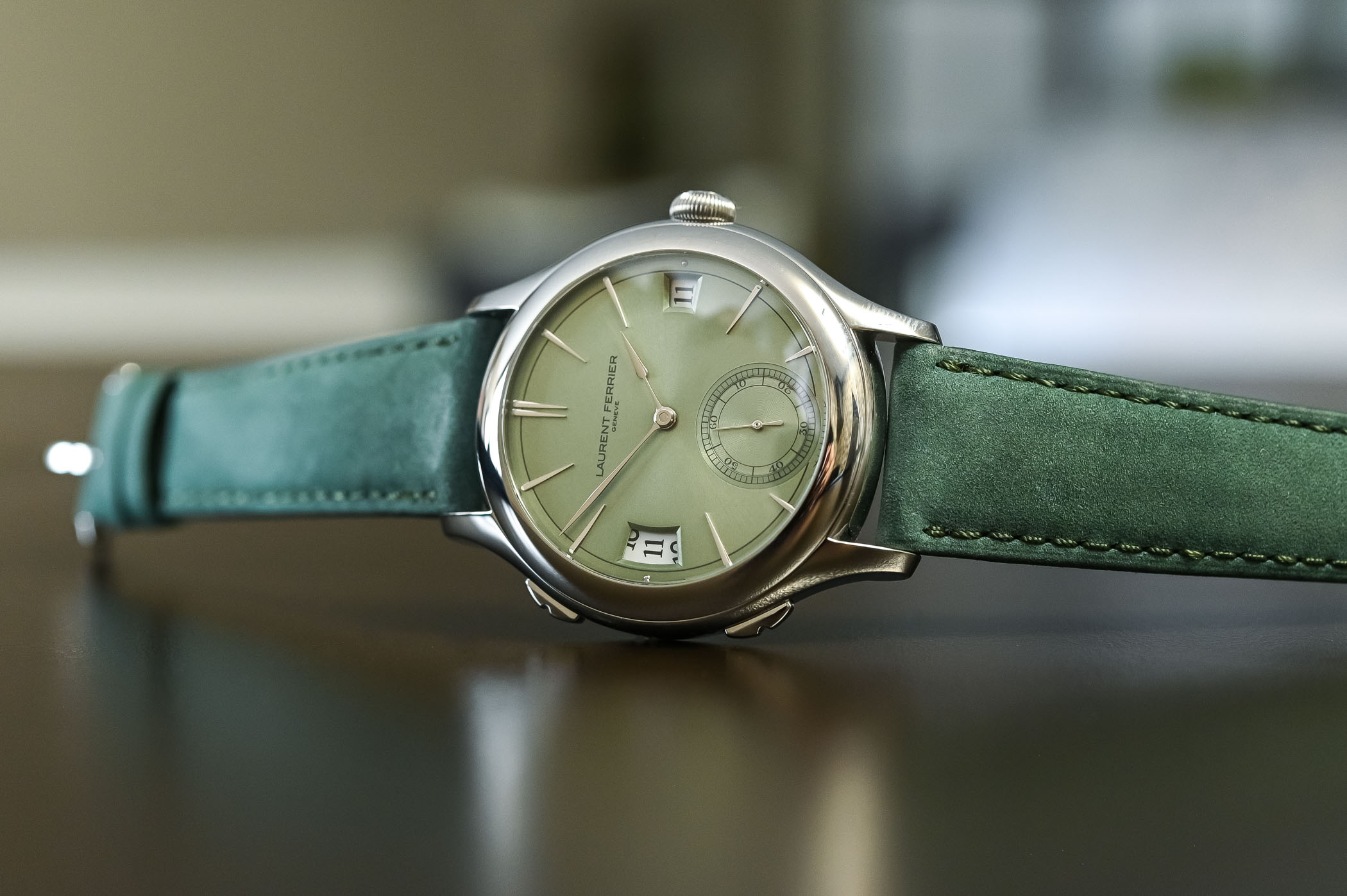
The concept of the GMT watch is simple. It might rely on different displays, but the result is almost always the same (we’re not including the world time function here). Whether it uses a 24-hour central hand, a sub-dial with a dual time function or an aperture-based display, the idea is to have a classic 12-hour display for the local time and an additional 24-hour function to indicate home or abroad time (or a 12-hour-based display, which is linked to a day-night indicator). You can add to that a rotating bezel, giving you a third time zone, but that’s the cherry on top of the cake. What matters is on the dial, and what matters even more, at least for today’s topic, is how to use and set these displays.
This leads us to the all-important difference between an office GMT watch and a traveller’s GMT. And before we delve deeper, look at the video below, which explains exactly how these two work. And the difference lies basically in the name the watch community has given them.
The office GMT watch
As its name indicates, the office GMT watch (also known as a caller GMT) is intended for business use. Most office GMTs have a central indication of the standard time and an additional time zone hand. The one function that can be set independently is the 24-hour-based hand. In short, it’s a watch to use when you’re in your home country and want to display the time in another area of the world, whether to track the time in one of your offices abroad or to check the time of your relatives living in a different country.
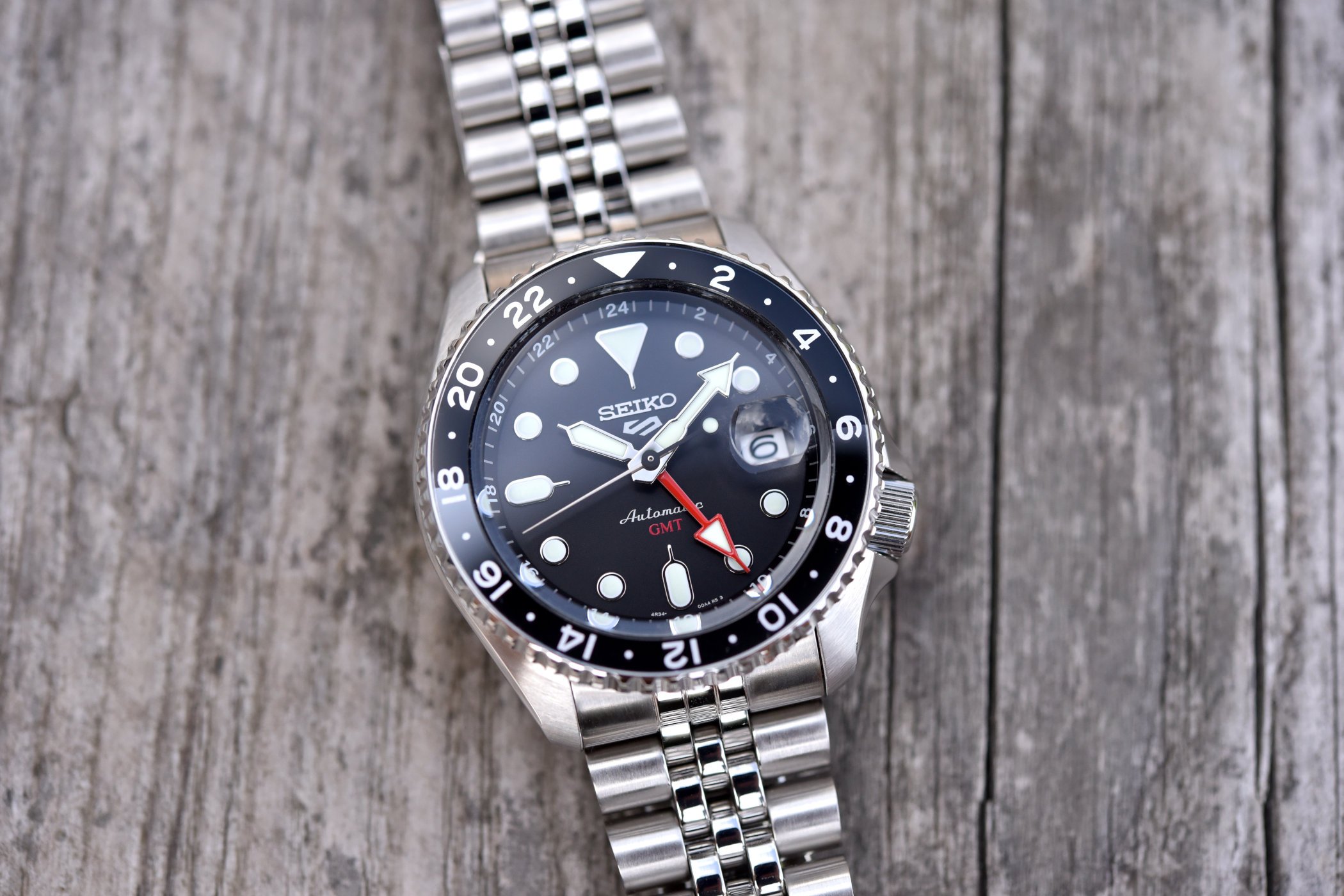
- What does it do? If you exclude the issue of adjusting the watch, an office GMT displays the standard time in the centre of the watch with hour and minute hands rotating around the dial on a traditional 12-hour basis. There is an extra 24-hour hand that displays an additional time zone – which can also be used as a day-night indicator if you link it to the local time hour hand.
- How to adjust an office GMT watch? Here comes the real differentiating factor. In a caller or office GMT watch, it is the 24-hour hand that can be adjusted independently in one-hour increments. In most cases, the first position of the crown is classic and used to wind the movement. The second position of the crown is the important one. Rotating the crown clockwise adjusts the GMT hand in one-hour jumps, yet only in a forward direction. As most GMT watches are equipped with a date, rotating the crown counterclockwise in the second position often adjusts the date function by instantaneous jumps. The third and last position of the crown is classic and sets the time. All hands (local hours, local minutes and 24-hour hand) move together.
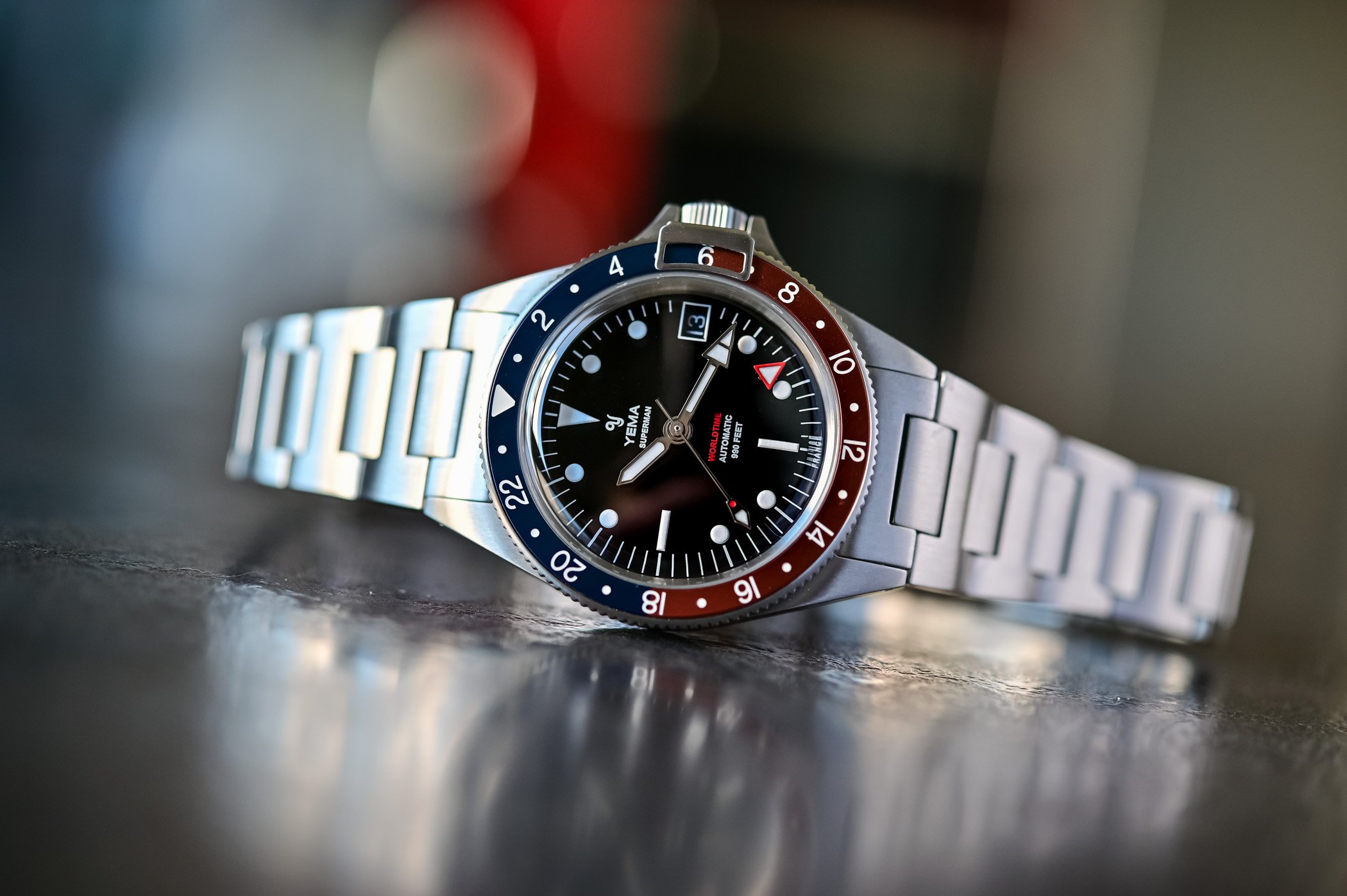
- Using it in the office or at home? This is where an office GMT makes the most sense. The idea is to use this watch in your home country to display a time zone in a different area of the world. All you have to do is to pull the crown to the second position and adjust it to the desired time zone, which will allow you an intuitive display of the time abroad.
- Using an office GMT when travelling? This is where things get a bit more complex. Say you fly from Paris and land in New York, with a 6-hour time difference. If it’s 10 PM in Paris when you land, it’s 4 PM in New York. As your watch will still be displaying 10 PM, you have to undertake a two-step sequence. First, pull the crown to the third position to adjust the main (local) hands to 4 PM. Then, bring the crown back to the second position and adjust the 24-hour hand back to the 10 PM position, so it will display the time it is at home (Paris in this case).
Caller or office GMT complications are commonly found in entry-level watchmaking or watches equipped with outsourced movements (ETA 2893-2 or Sellita SW330-1). The reason is simple: it can be executed by adding a 24-hour hand without changing much of a 3-hand base movement. You’ll find this in watches like the Seiko 5 Sports Style GMT and higher-end models like the TAG Heuer Aquaracer Professional 300 GMT.
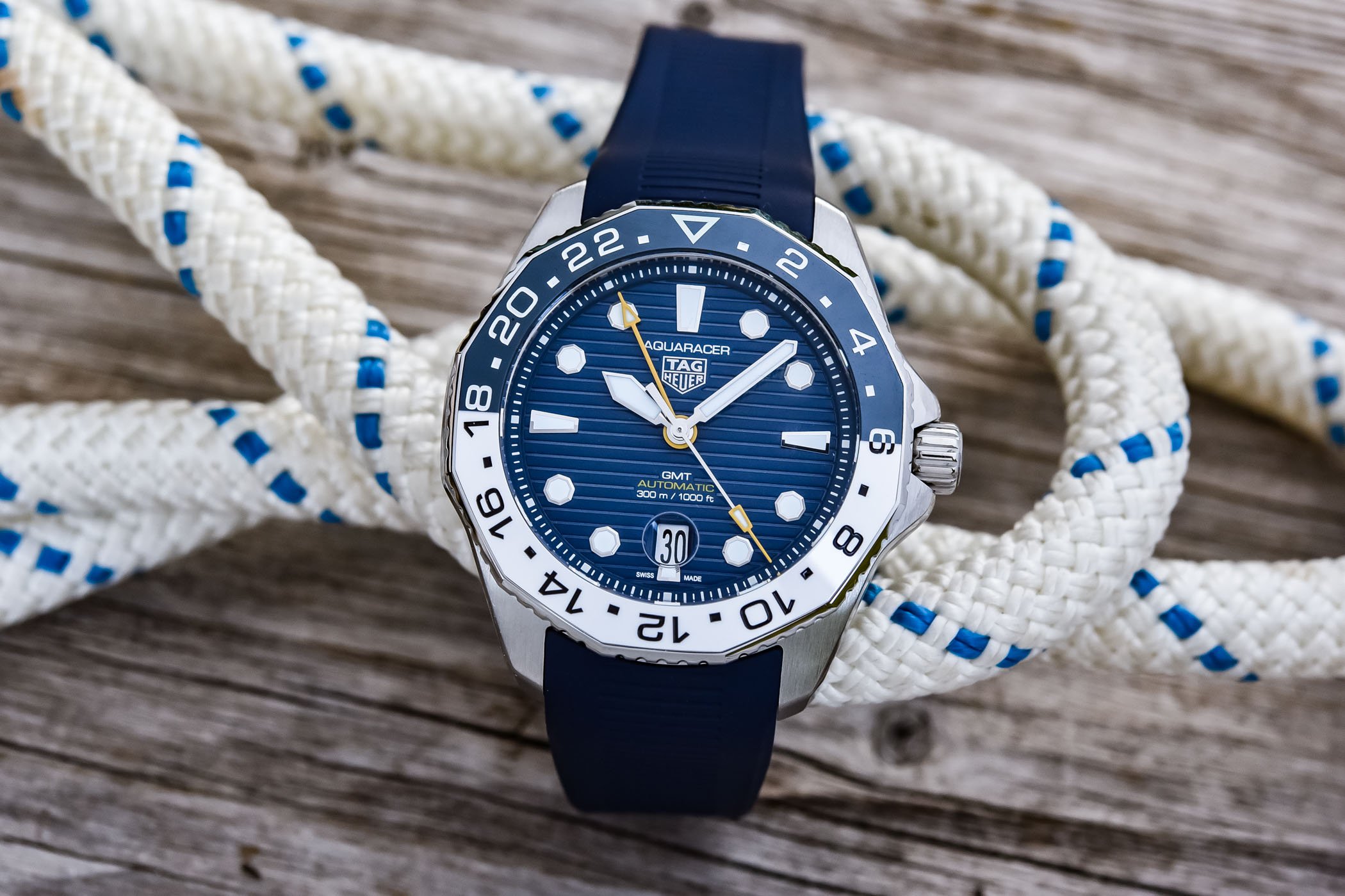
- What are the flaws of an office GMT watch? As you’ve seen above, the 24-hour hand can only be adjusted in one direction (forwards), as the other rotation direction of the crown is used to adjust the date. Also, travelling with a watch of these characteristics isn’t as practical. If you travel with an office GMT, you need to adjust the hands by engaging the third position of the crown. This means you’ll engage the stop-seconds mechanism, and you’ll also have to adjust the minute hand… not the best if you’re the kind of person that loves to fine-tune your watch to the closest second.
The traveller’s GMT watch
The benefits of a traveller’s GMT watch are indicated in its name: it is a tool for frequent travellers who cross time zones and need to adjust their watches regularly. Most of these watches display the time centrally with local hours and minutes and feature an additional 24-hour hand in the centre. But here, it’s not this hand that can be adjusted independently, but the local hour hand… And when travelling, it makes a world of difference.
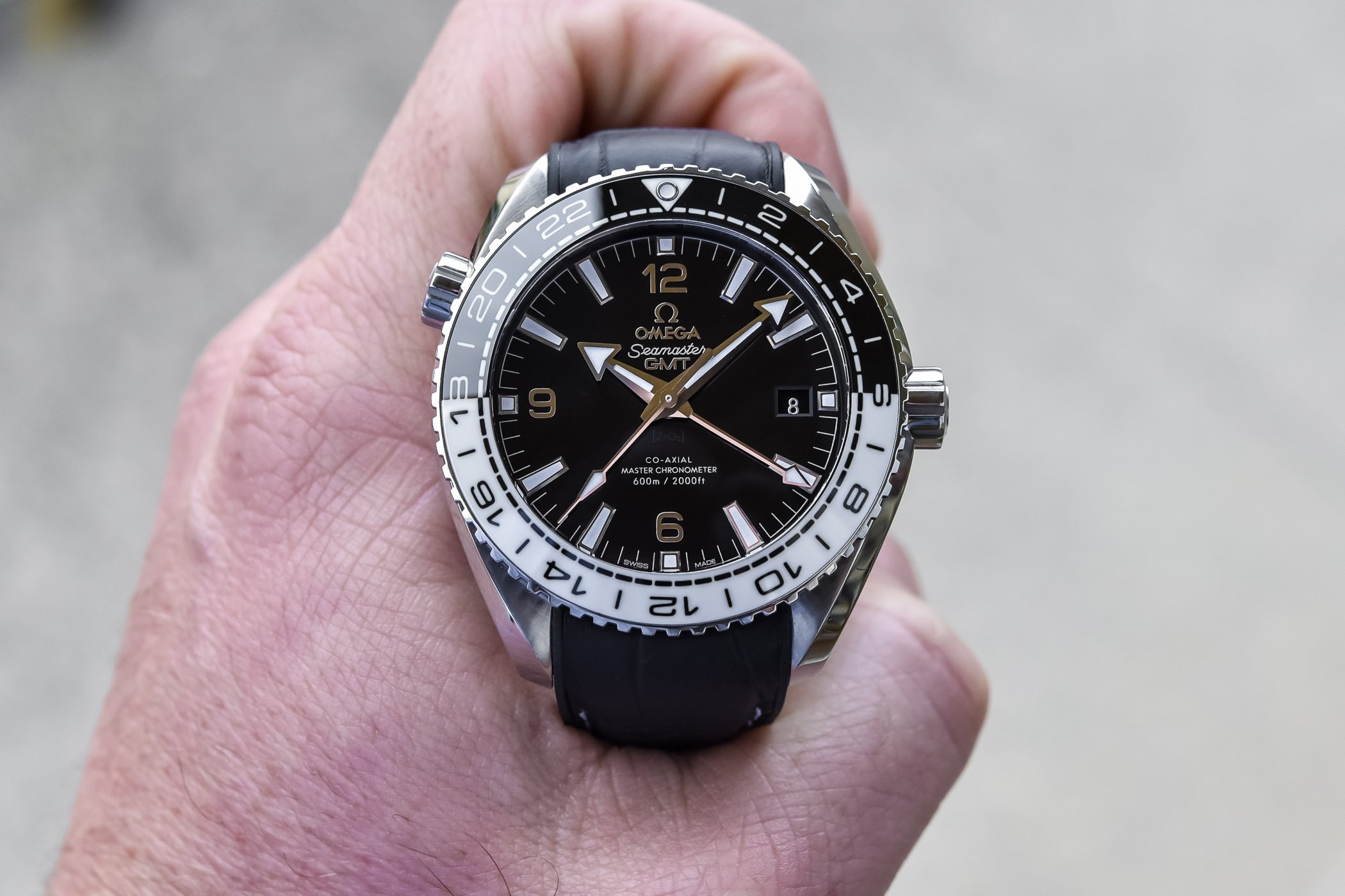
- What does it do? Basically, it does precisely the same as an office GMT watch, at least when you subtract the issue of adjustment from the equation. Central hands are used to indicate the local minutes and hours, with an additional 24-hour hand and a date (most of the time). The latter can indicate an additional time zone or as a day-night indicator if you’re not travelling.
- How to adjust a traveller’s GMT watch? In a true GMT watch, the local hour hand can be adjusted independently in one-hour increments, not the 24-hour hand. The first position of the crown is traditional and winds the movement. The difference with an office GMT lies in the second position of the crown. Here, you can adjust the local hour hand by one-hour increments, forwards and backwards. The third position of the crown is, however, classic and sets the time, with all three hands (local hours, local minutes and 24-hour hand) moving together.
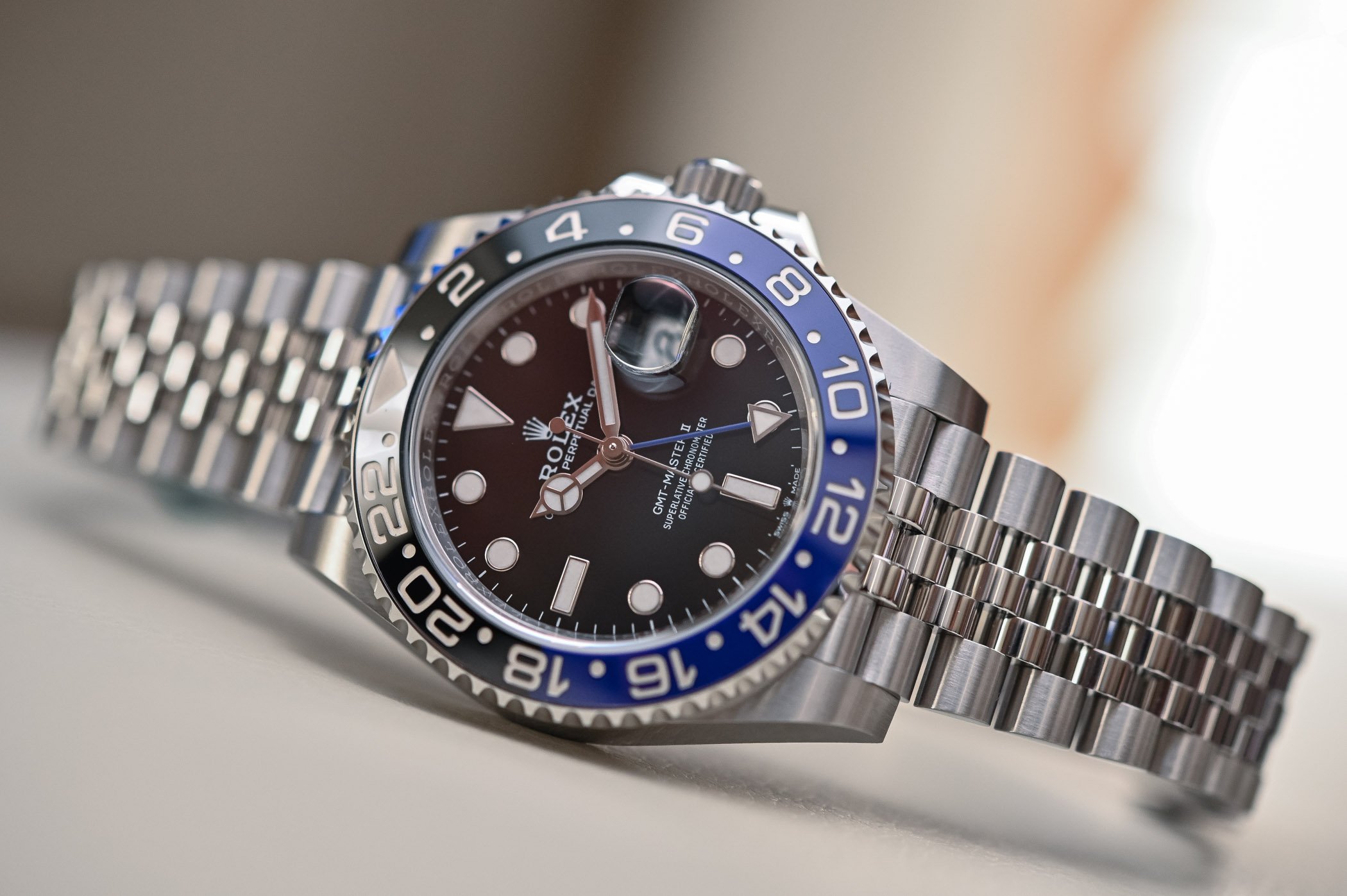
- Using a traveller’s GMT watch when travelling? As its name suggests, a traveller’s GMT watch is made for travelling. In such conditions, it’s as user-friendly as it gets. Take our initial situation, travelling from Paris to New York with a 6-hour time difference, landing at 10 PM Paris or 4 PM NY time. When landing, you pull the crown to the second position and rotate it counterclockwise until the hour hand jumps back to the 4 o’clock position. And if you use this traveller’s GMT watch correctly, meaning that you use the GMT hand as a day-night indication, then the GMT hand will still be pointing at 10 PM, giving you the right time in Paris. And by doing that one-step sequence, you won’t disrupt the main time or activate the stop-seconds function. So the time will still be running smoothly. And best of all, the date moves according to local time in both directions.
- Using a traveller’s GMT watch at the office? Well, this is where the true GMT watch makes the least sense. In this case, if you want to keep the local time intact but have the GMT hand displaying a different time zone, you’ll have to use a two-step sequence (basically, the same process as an office GMT when travelling). This means pulling the crown to the third position, bringing the GMT hand to the position you need, switching back to the second position, and adjusting the local hour hand back to your local time.
The true or traveller’s GMT watch is mainly featured in higher-end watches with manufacture or in-house movements – think Rolex, Omega, Tudor, Grand Seiko, etc. Disconnecting the main hour hand from the rest of the movement so it can perform small increments requires more modifications if the watch is based on an existing 3-hand movement. Recently we’re seeing genuine efforts from accessible brands to introduce traveller’s GMT watches to the market with Longines’ Spirit Zulu Time or Mido’s Ocean Star GMT – the latter powered by a Powermatic 80 movement, meaning that Swatch Group is bringing the true GMT complication to its entry-level brands.
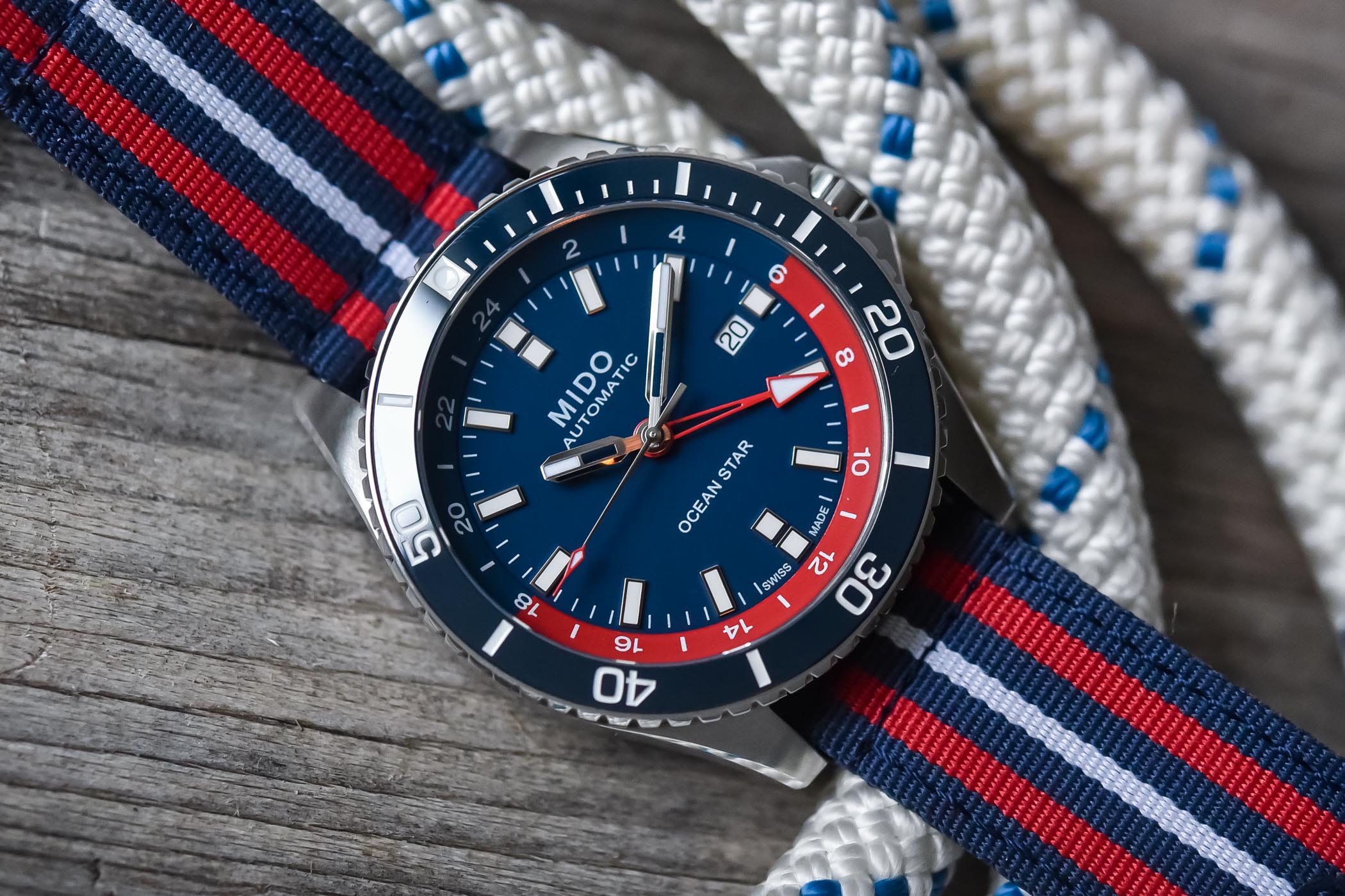
- What are the flaws of a traveller’s GMT watch? As seen above, using a GMT watch at home or the office isn’t the most practical solution. The whole point is to use them for travelling. Also, while being able to adjust the local hour hand backwards and forwards is extremely practical, it has a direct consequence on the date. You’ll need to use the one-hour increment function and advance the hour hand, so the date jumps accordingly.
Which is best? Traveller’s GMT or Office GMT?
I’ll first give you a politically correct answer. The best watch is the one that best does the job you need. If you’re using a GMT watch at home or in the office to display the time in another part of the world, then an office GMT timepiece will do the job perfectly. It also allows you to access the most affordable models. And yes, it is still usable when travelling, but keep in mind that an office GMT watch won’t be the most convenient. If you’re frequently travelling, a true or traveller’s GMT watch is a must-have. It allows you to adjust the watch to the local time zone in a highly practical and user-friendly way.
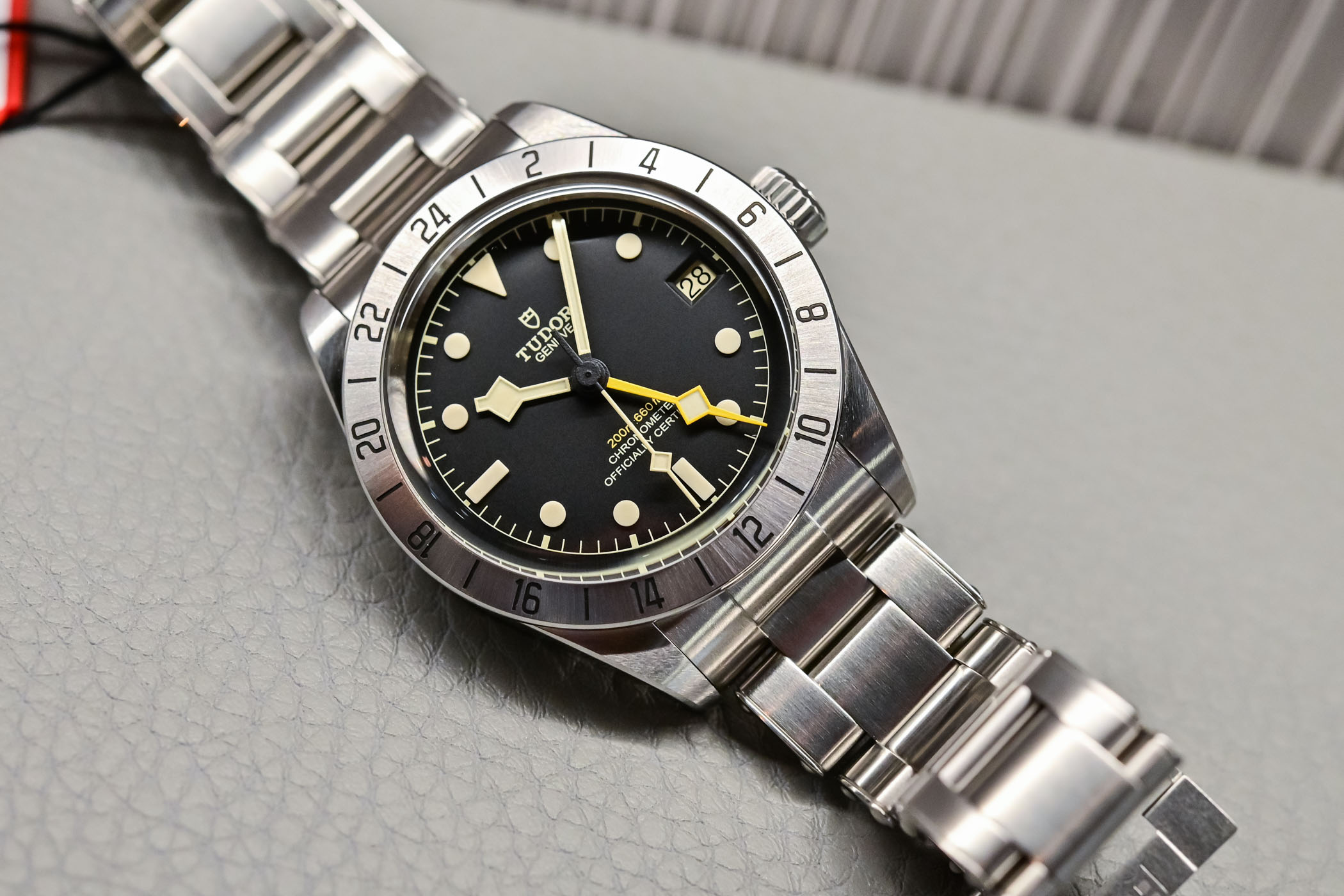
Now, a more subjective answer regarding the “which is best” question leads me to say that a traveller’s GMT watch is the best. It is mechanically more complex, it is more suited to the job of a GMT watch (yes, that is travelling, first and foremost), and there must be a reason why some of the best watchmakers in the industry have chosen it as their preferred solution. Do you think Rolex would use a traveller-style function on its GMT-Master II if it weren’t the best option available? Best of all, with efforts from brands to introduce it inside more accessible watches, it’s no longer an elite complication. I wouldn’t be surprised if the old ETA 2893 or SW330 architecture soon went out of fashion. And, in my opinion, it would be for the best.

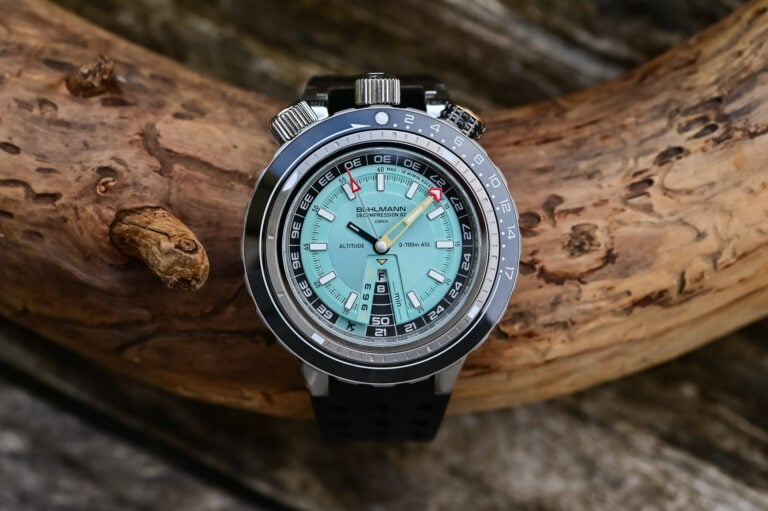
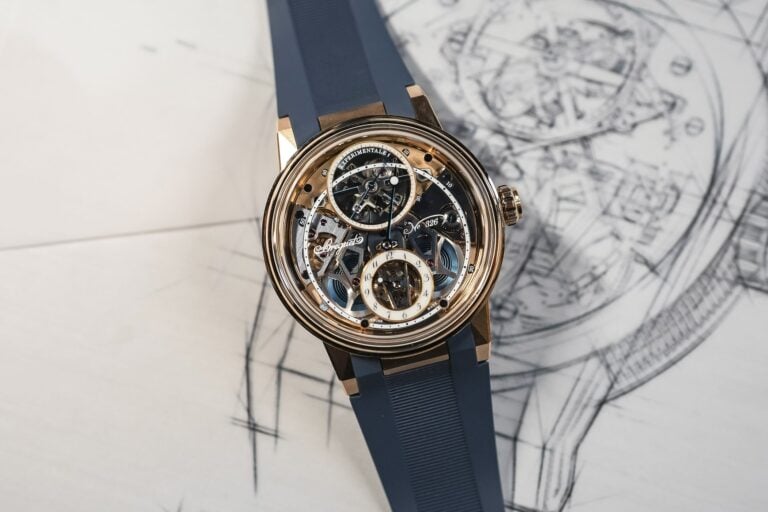
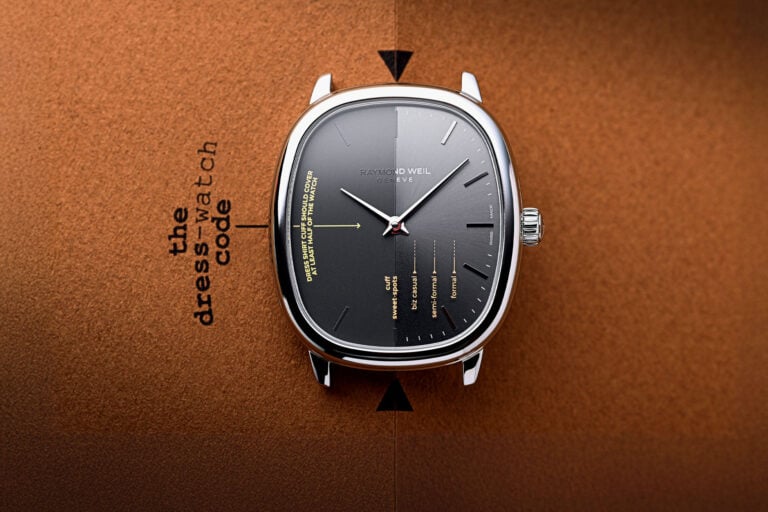
8 responses
If looking at the history of GMT watches you might want to check out the 1925 Longines Zulu, referenced in Monochromes intro to the Spirit Zulu Time. Just do a web-search for “1925 Longines Zulu”, it’s the square one. This had a 25-hour hand in addition to the regular time and was created in the year of Rolex’s birth!
Longines had already made GMT pocket watches in 1908 and this was the progression.
Oops, 24-hour hand!
@Madder – you’re totally correct in pointing this Longines. But we still need to investigate a bit regarding this 1925 model, just to be sure of its existence and all the facts about it… So for the time being, the Glycine still retains the title of first modern GMT watch.
Thank you Brice.
Maybe just ask Longines. The CEO says they have uninterrupted records of every watch made for the last 140 years or so.
If they are coy about giving more info… well, like a Homeland Security officer told my sons at LAX, “I just look at people. If they look away, I look harder.”
Thank you Brice for your very informative article, I found it the best explanation of the difference between caller/office and traveler GMT so far, now it’s finally all clear to me (not owning neither type of watch, your detailed explanation of the crown functions was super helpful to understand the different benefits and disadvantages).
Informative and entertaining as always. In addition I would like to add that every enthusiast and or collector should have at least one GMT in rotation.
Do dual-time watches qualify as GMT?
Great article: really informative and entertaining. If you allow me, I would add that a traveller GMT watch with a rotating bezel (like the GMT Master II or the Black Bay GMT, but not the Tudor Pro or the Rolex Exploer II) can easily do the same job as an office GMT. You only need to rotate the bezel and you get your second time zone without even the need to use the crown and modify the position of the 12 or 24-hour hands . That’s why, in my opinion at least, the traveller GMT is the “true” GMT.